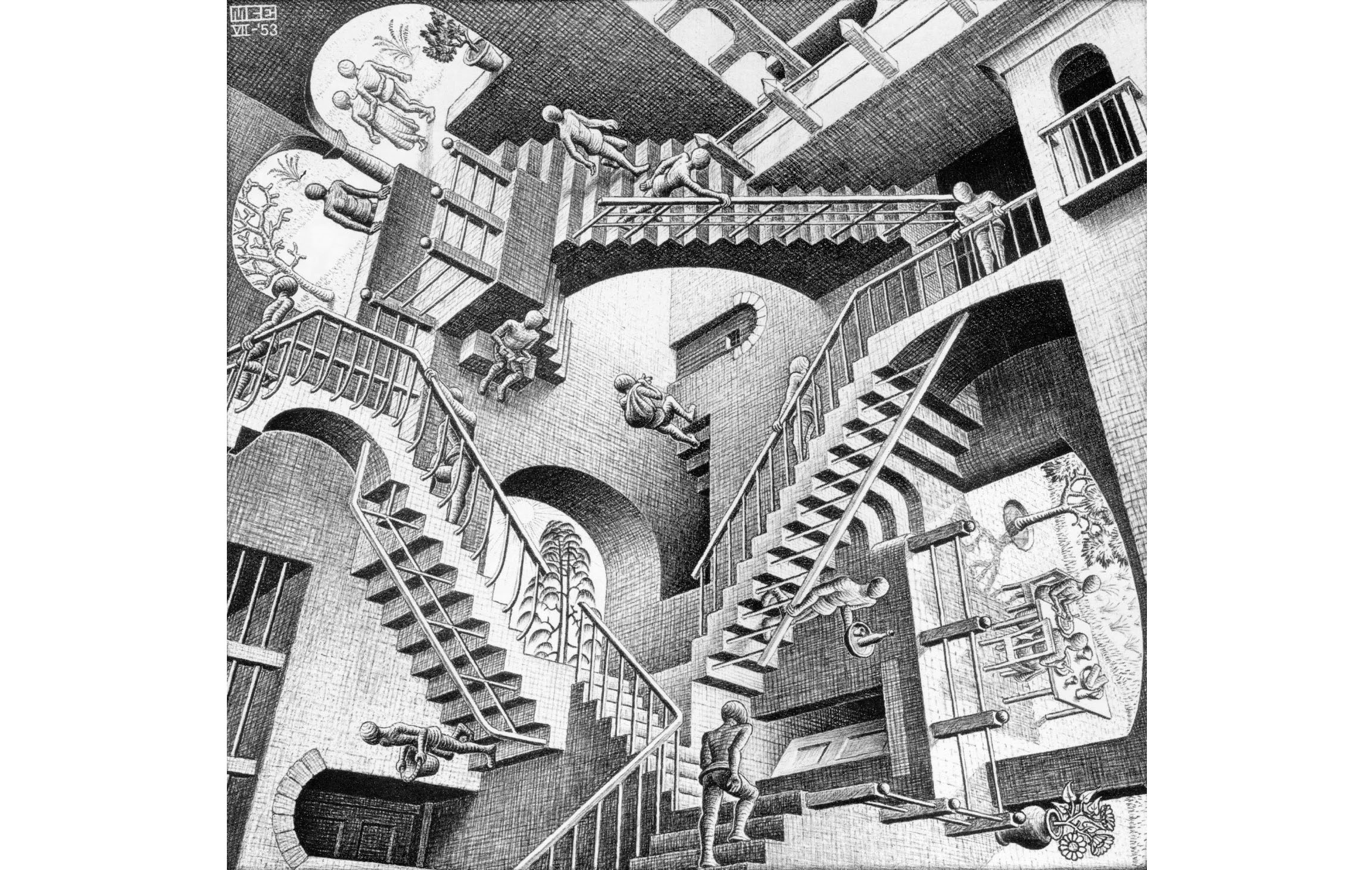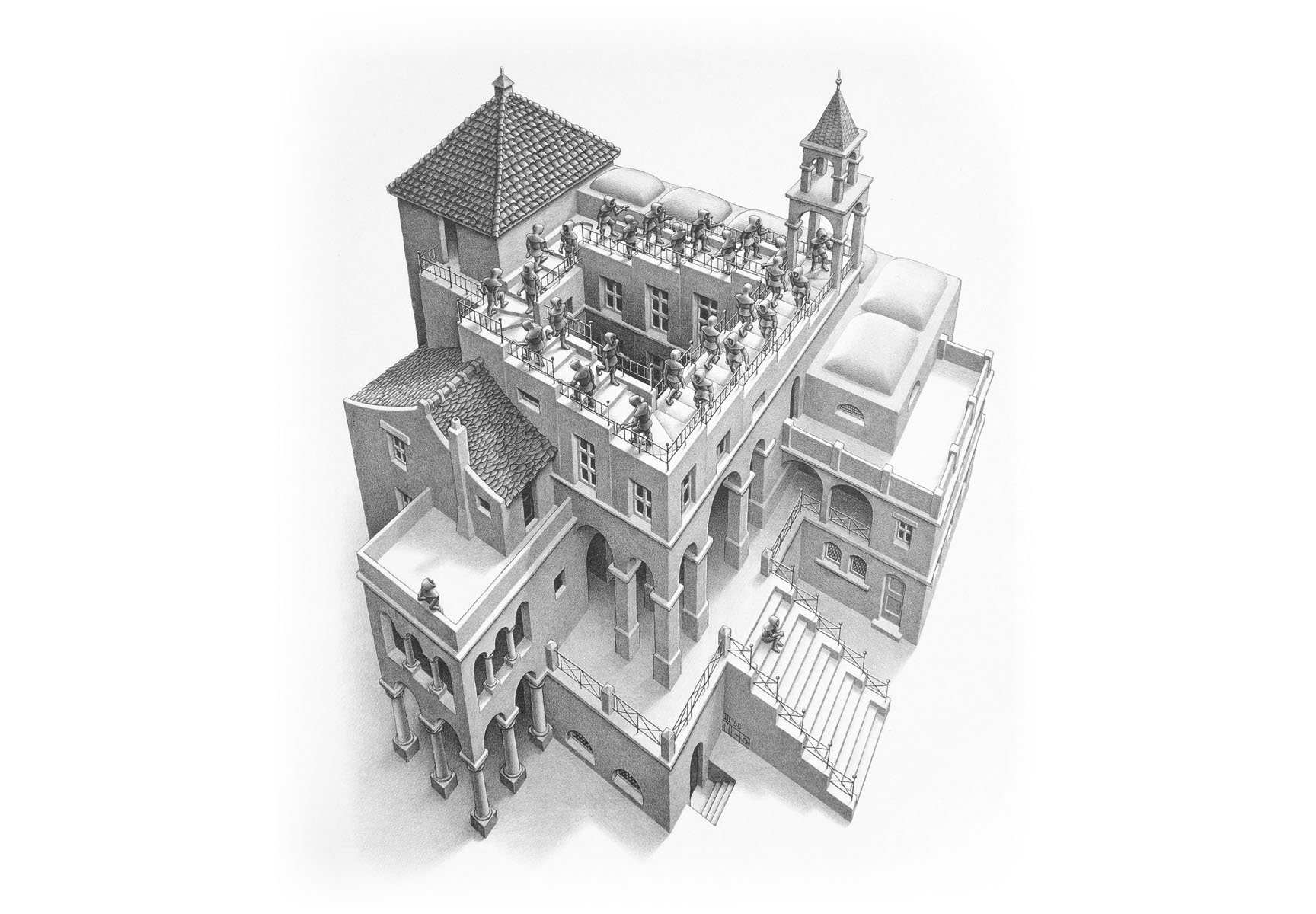January 26, 2019
Negative Space
One of the most important lessons you learn as a student of design is the importance of negative space. For every mark you make you are changing the space around it. Artists understand that this negative space is just as important as the mark itself.
Visually this is a critical lesson, but it is equally important as a way to evaluate other aspects of life. When you are listening to someone speak it is also important to hear what they aren't saying. To appreciate Colorado's weather you need to acknowledge the absence of Missouri's weather. For every headline begging for your attention there is an untold story few can hear. Negative space is everywhere but it takes practice to see it.

When I was a boy, I spent many dreary Missouri days studying my favorite artist, M.C. Escher. I was captivated by how Escher could break your brain by bending the positive and negative space of his art. Echoes of these brain-twisting lessons still reverberate in my skull. It has made me a skeptical adult, permanently questioning visual information, constantly on the lookout for fraudsters who manipulate our perceptions to serve selfish needs.

If you strive to develop an eye for negative space it's hard not to feel like the lost beings in an Escher print. We sit in empty rooms, complete meaningless tasks, fill our bellies with tasteless food. Gravity shifts, stairs flip, and it is hard to know if we are going up or down. Faceless people pass us, incapable of eye contact, destined to remain strangers. How can you not feel lost in this uncanny valley? It appears to be three-dimensional and yet something is missing.
Our education system rarely concerns itself with negative space. Schools are primarily interested in cramming the kids' brains with facts, memorizable shortcuts, and stats that are easily tested. The negative space of education is only occassionally breached by the rare teacher who touches the lives of her students. Some of us can point to these rare exceptions, we remember a teacher who encouraged our questions, fueled our uncertainty, and pointed us at unknown worlds where our curiosity found open space for our imagination to thrive.
Our political system denies negative space. To be an independent thinker in an era of partisans will almost certainly cause your voice to be shouted down from both directions. So we remain silent.
Negative space in the workplace is equally scarce. Businesses require process, they are well-lubricated systems that flush out the unpredictable in favor of safe, recreateable, predictable humans. Even Apple, a company where thinking different is supposedly honored, can do little more than tip a hat in the direction of ellusive free thinkers. Strip away the fluff from their advertising masterpiece and you get this:
"Here’s to the ones who see things differently. You can’t ignore them because they try to change things."
Perhaps that is the most we can strive for, the ability to change things. But how? How do you think different? How do you train yourself to see the negative space hiding right in front of your eyes?

Perhaps the answer is to once again step inside the artwork of Escher. You've spent your life climbing a staircase in search of answers. Perhaps it's your first time around, maybe it's your last. With each loop you gain a little clarity, and for the first time you notice a doorway. You step into its negative space and all of a sudden...
Thanks for reading. I write almost every Saturday, trying to remember which direction is up as I climb life's staircase. Follow me. Stay creative.
Previous: Why is the Boston Marathon So Slow?